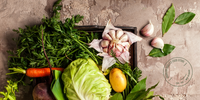
Terroir, from the French word ‘Terre’ meaning ‘Land’, is how a particular region’s terrain, soil, climate and farming practices affect a crop. Observing the differences in wines from different regions, vineyards or indeed particular parts of the vineyard, French winemakers developed the term terroir as a way to describe how the unique aspects of a place, influence and shape the wine made there, imparting a distinctive quality that is specific to that growing site.
The definition of terroir can be further expanded to include elements that are controlled or influenced by humans. This can include the decision of which grape variety to plant, some grape varieties thrive better in certain areas than in others, to use wild or laboratory produced yeast, how vines are pruned and indeed how the finished wine is aged, some feeling the use of oak enhances the expression of terroir and other firmly disagreeing.
Winemakers can choose between making terroir driven wines or not. The commercial importance of terroir driven wines is a cause for much debate in the wine industry and with wine drinkers alike. Terroir driven wines generally command higher prices. Wine making techniques that pay little or no regard to terroir, often make for homogenised wines where little can be told of the region from which it was produced. Looking specifically at France, here are a few interesting, accessible and affordable wines where terroir is a key element in their production.
Minervois - One of the largest wine producing regions of the Languedoc-Roussillon, Minervois AOC (protected designation of origin) is a vast amphitheatre bordered by the Canal du Midi and the Montagne Noire. The climate is mainly Mediterranean influenced, the terrain terraces of clays, schiste and limestone.
Sainte Leocadie - Minervois - Rustic charm in a glass. Plum and cherry notes with hints of spice to delight. Very food friendly, suiting winter fare, stews, casseroles, grilled meats. Definitely one for a good burger.
Côtes Chalonnaise - Pastures and orchards intersperse the vineyards of Côtes Chalonnaise, located in the centre of the Burgundy region. Limestone, sand and clay soil provide good drainage for the vines with rolling hills offering protection from hail and frost, creating a myriad of microclimates that greatly influence the wines from this region.
Buissonnier Côtes Chalonnaise Chardonnay - Fresh and fruit-driven. Citrus with hints of honeysuckle and hawthorn. Food Pairing: Chicken, pork, fish with creamy sauces.
Southern Cote du Rhone - The Rhone Valley was created at the end of the last ice age when the Rhone glacier carved its way south leaving a unique geography and climate behind. Winding its way south, the Rhone river’s fertile banks offers unique terroir for the vineyards of this region. Long warm summers, mild winters, less rainfall, the famous Mistral Wind and the wild resinous herbs Garrigue that cover the landscape, all contribute to the distinctive terroir wines of this region.
Bee Famous – Organic - Cote du Rhone - 75% Grenache, 25% Syrah. Berry flavours, silky smooth, complete and ¬effortless. Food Pairing: Grilled beef, grilled lamb chops, cheese.




















